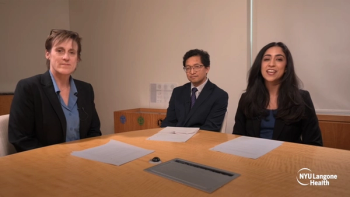
Diabetic retinopathy treated with micropulsed diode laser
The treatment of diabetic retinopathy seems to be managed well with the use of the diode laser. According to one expert, the micropulsed diode laser is particularly effective in treatment of this disease, offering patients a safe and painless treatment solution.
Key Points
"Treatment of diabetic retinopathy with this micropulsed diode laser approach results in less marked morphologic effects on the retinal pigmented epithelium when compared with standard pulse exposures," said Dominic McHugh, MD, FRCS, FRCOphth, DO, who spoke of his experiences with the micropulsed diode laser at the annual meeting of the American Academy of Ophthalmology.
All lasers currently used in the treatment of diabetic retinopathy cause visible burns that can produce quite significant retinal scarring, and, over time, these laser scars can expand and encroach on the fovea, resulting in visual impairment and even complete loss of vision. Technologic advances in laser photocoagulation therapies have led to a shift from older argon laser treatments to state-of-the-art diode laser therapy, in particular micropulsed diode laser treatment, which appears to achieve superior results in terms of vision improvement, he said.
"The practical consequence of a micropulsed exposure is that when each packet of energy arrives at the retina, there will be a heating effect in the target tissue, in this case the retinal pigmented epithelium, which is limited in volume and will have cooled by the time the next micropulse arrives. This ensures that the thermal damage profile of the laser pulse is limited to the pigment epithelium and the tips of the photoreceptor," he said.
Recently, Dr. McHugh and fellow researchers conducted a 3-year pilot study in which 25 eyes of 19 patients with untreated clinically significant diabetic macular edema underwent micropulsed grid macular therapy with a 5% to 15% duty cycle. Each eye received one to three treatments consisting of 200 exposures using a 125-μm spot in a 200-millisecond envelope.
Results showed that at 12-month follow-up, clinically significant macular edema was fully resolved in 88% and markedly decreased in 92%, and visual acuity was shown to be stable in 80% and improved in 10% of eyes treated. At 36-month follow-up, recurrent clinically significant macular edema was seen in 36%, and visual acuity was stable in 92% and improved in 4% of eyes treated, with 8% worse at the final follow-up.
The side effects seen with conventional laser therapy can include discomfort, hemorrhage, foveal damage, and central scotomatous field loss. According to Dr. McHugh, treatment with the micropulsed diode laser showed no serious side effects and offers patients a superior treatment option.
In a parallel study, 44 eyes with diabetic macular edema were randomly assigned to receive either Fd:YAG (green) laser or diode micropulsed grid therapy (10% duty cycle), and the therapeutic effects were evaluated. At 17 months follow-up (average), results showed both study groups to have a stable vision (±10 letters) as well as a similar decrease in retinal thickness. Neither patient group demonstrated any significant difference in color contrast or contrast sensitivity.
"Laser photocoagulation used for the treatment of diabetic retinopathy has come a long way from fledgling technologies, which were fraught with complications including angle closure, macular edema, and foveal burns, often leading to loss of the visual field," Dr. McHugh said. "These less-than-optimal results spawned further research, which gave birth to the diode laser, which soon showed a superior efficacy, with low energy requirements and a higher reliability when compared with the argon laser."
Newsletter
Don’t miss out—get Ophthalmology Times updates on the latest clinical advancements and expert interviews, straight to your inbox.













































